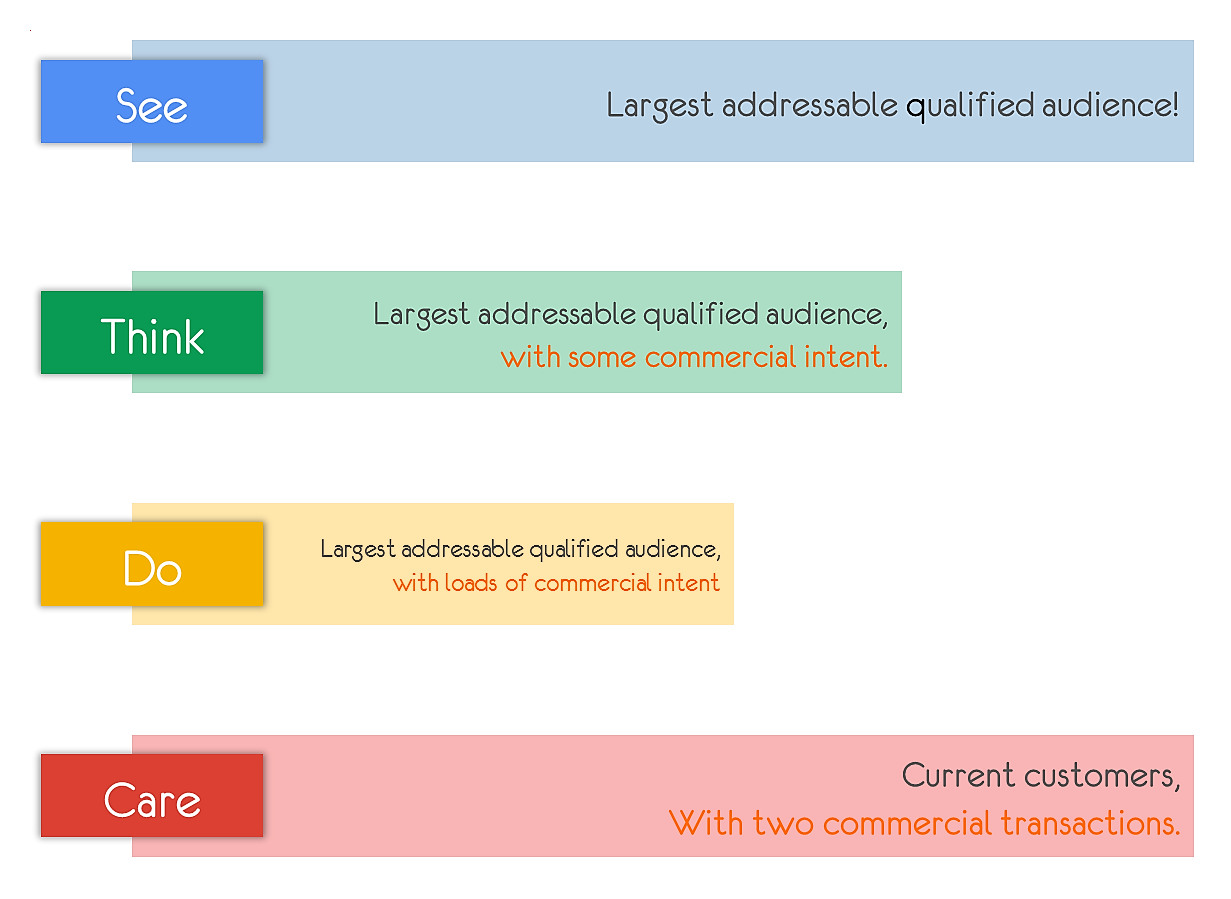The “See, Think, Do, Care/Coddle” Business Framework envisioned by Avinash Kaushik, digital marketing evangelist at Google, is a Content, Marketing and Measurement Strategy Model, that has received -as its founder also admits- “tons and tons of implementations around the world”.
It is a new perspective to view Marketing & SEO Strategy, regardless of the channel the business is.
During an interview with Acronym CMO Mike Grehan, Avinash Kaushik replaced the old traditional consumer buying cycle of Awareness, Consideration, Purchase, and Loyalty model, with this new Framework. He said:
“I don’t think about awareness, consideration, purchase loyalty — these standard marketing models, I hate them. So I created a new one. I call it ‘See, Think, Do.’ And what it says is that rather than thinking selfishly as a company, you have to think from a consumer perspective. … Every single person in the world is in one of these four buckets [See, Think, Do, Care].”
Kaushik in “See, Think, Do, Care” says that “there are four different audience intent clusters and we as companies/as Marketers / As CxOs, need to ensure that we solve for all four audience intent clusters”.
The fundamental elements of the Framework are the Consideration Stages and the Audience in each Stage. Kaushik’s model, places shoppers first, evaluates the marketing programs and right-aligns view of success (metrics).

What is See, Think, Do, Care Model?
The See stage comprises of a brand’s most massive qualified addressable audience. Kaushik uses the example of a business that sells clothing. The definition of the audience in the See stage is “all people who wear clothes.”
The Think stage is the segment of consumers thinking or considering about a particular thing. In the above example, this represents “all people who wear clothes who think they might need some.” This is – as Kaushik notices- a subset of the See audience deriving by even the slightest amount of intent. We don’t know when they might need some clothes. But we know that they think they need new clothes.
The Do stage includes that subset of consumers who are ready to buy. For the clothing company example, these are “all people who wear clothes who think they might need some and are currently looking to buy them.” It’s a subset of the Think audience and -as again Kaushik describes- perhaps the most desirable audience in the world.
The 4th stage, Care (or Coddle) is the ongoing contact following that inspires repeat purchases.
For this 4th Stage, Kaushik says: “I believe to a company’s a philosophy where they only consider someone to be a customer if they purchased a second time. I like that. In the first purchase, the customer just takes you for a spin. They might hate you. They might hate your product. They might become poor/rich. They might … so many things could go wrong. But if they come back to buy again, let’s consider them to be a customer.” Care for existing customers, involves the creation of separate See/Think/Do Stages for them. A marketer should create unique Strategies, Content, customized mobile apps, e.tc. for the existing customers, to ensure their satisfaction and loyalty.
‘The foundation to any company’s success is to ensure that there is an attractive product/content for audiences to engage within each of the three stages: See – Think – Do. And that comes before you think about marketing/sales/advertising/billboards/tv’
-Avinash Kaushik
Image Source: www.kaushik.net

